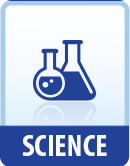|
This section contains 462 words (approx. 2 pages at 300 words per page) |

|
Organohalogens are organic compounds that contain one or more halogen atoms (fluorine, chlorine, bromine or iodine). The halogen atom(s) is covalently bonded to a carbon atom. Relatively few organohalogen compounds are found in the terrestrial organisms of nature, but organohalogen compounds are much more common within marine organisms. An organohalogen with an essential role in human biochemistry is thyroxin, the iodine-containing hormone that helps to regulate human metabolism. Simple organohalogens may be produced synthetically from the radical chlorination/bromination of saturated alkanes:
CH4 + Cl2 CH3Cl + HCl
CH4 + Br2 CH3Br + HBr
They may also be produced from the chlorination of alkylbenzenes: C6H5CH3 + Cl2 C6H5CH2Cl + HCl
The electrophilic substitution of aromatic hydrocarbons using ferric chloride catalyst also produces organohalogens: C6H6 + Cl2 C6H5Cl + HCl
And orgaohalogens can be produced from addition reactions involving chlorine/bromine gas (and/or hydrogen chloride...
|
This section contains 462 words (approx. 2 pages at 300 words per page) |

|


